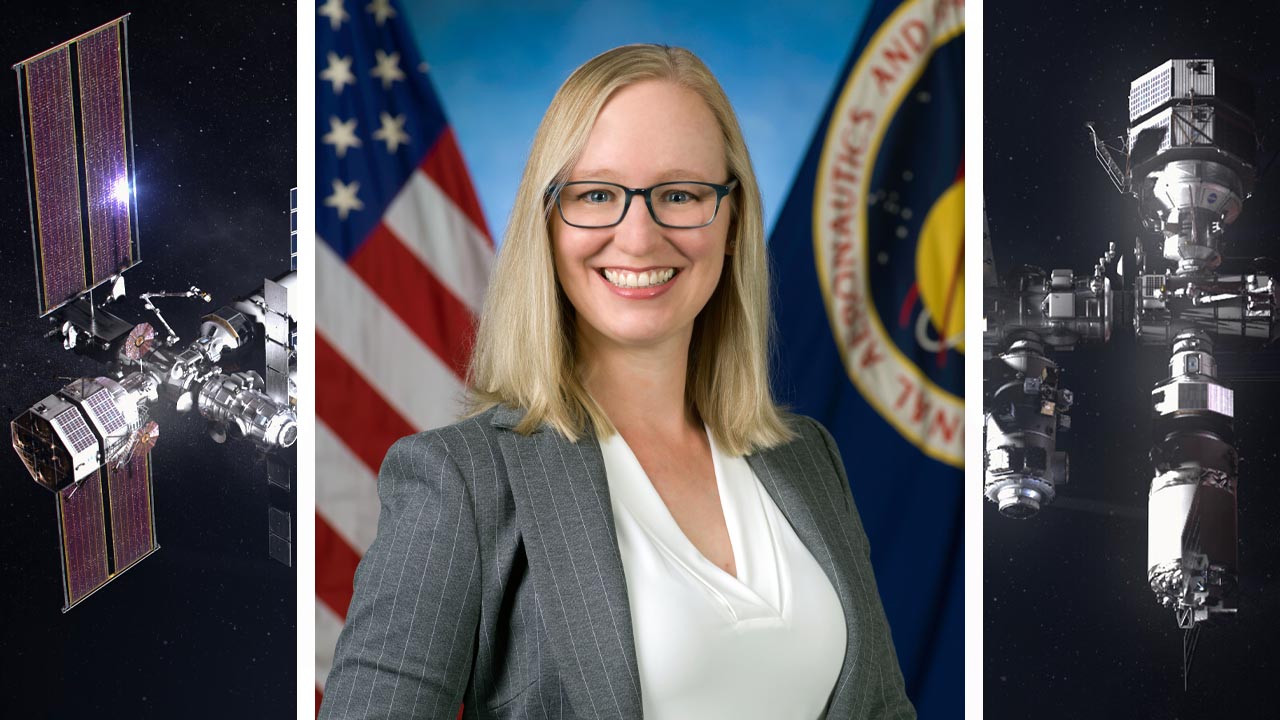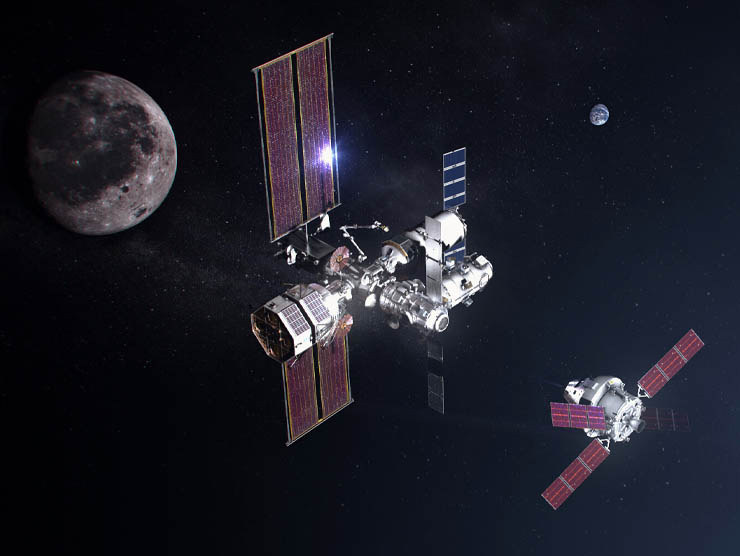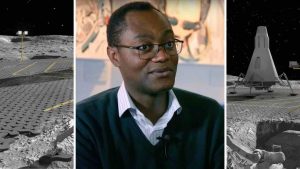
Emma Lehnhardt - kosmomagazine.it
We metEmma Lehnhardt, Program Planning & Control (PP&C) Manager for NASA’s Gateway Program. She is the leader of the team responsible for the business operations of the Gateway. Previously, she led the agency-wide process of budget formulation at NASA Headquarters for the agency’s ~$20 billion per year budget. She has also worked at the White House’s Office of Management and Budget.
The NASA’s Gateway Program has the objective of building the first space station in lunar orbit from 2024. The goal is supporting NASA’s Artemis missions – that will bring the first woman and the next man on the Moon from 2025 – and increasing the scientific research in the deep Space. Then,Gateway will be a critical platform for developing technology and capabilities to support Moon and Mars exploration in the coming years.
You’re making one of the most beautiful jobs in the world: you manage the business operations for the Gateway program, the first space station orbiting the Moon. Who is collaborating on the design of the Gateway space station? What are the differences between the International Space Station (ISS) and the lunar Gateway?
Thank you! I agree that it’s a beautiful job. One of the best parts is working with partners at other space agencies and commercial companies. Internationally, we work with the European Space Agency, Canadian Space Agency, and Japanese Aerospace Exploration Agency. In fact, I am responding to this interview today from Oberpfaffenhofen, Germany, just outside of Munich, where we are meeting with our partners for coordination meetings. Commercially, we have major contracts with Northrop Grumman, Maxar Technologies, and SpaceX in the United States.
Some of the main differences between Gateway and the International Space Station (ISS) are size, occupancy, and distance from Earth. Gateway is about one fifth the size of ISS and is built to house up to four astronauts for missions that are around 30 days. On the other hand, ISS can comfortably fit around a dozen people, and has been continuously occupied for more than 20 years. So ISS is much bigger! And because Gateway will not be permanently occupied, it needs to “fly itself” uncrewed for long stretches of time, with more autonomous systems. And of course, Gateway will be orbiting the Moon – almost 400,000 km away – whereas ISS is about 400 km above the Earth.

Credits: NASA/Alberto Bertolin
There are now some habitable elements under construction? What are the next steps?
Yes, our “deep space home away from home” is coming together! The two main habitable elements are called HALO and I-HAB. The Habitation and Logistics Outpost (HALO) is being built by Northrop Grumman with a subcontract to Thales Alenia Space in Turin, Italy. Thales is currently finishing the welding on the main habitable element for HALO, and starting work on the main body of the International Habitation Module (I-HAB), a contribution from ESA.
The first two pieces of Gateway that will launch and transit out to the Moon are the HALO and our Power and Propulsion Element. The next steps will be to finish critical design and construction of both, and then integrate the two elements prior to launching them together on a SpaceX Falcon Heavy rocket from Florida in the United States.
What are the most important difficulties and feelings of your job?
One of the best feelings is being so focused on the mission. I can visualize the future launch of the first elements of Gateway – how exciting that will be! The thought of looking up at the Moon from Earth and knowing that our space station is up there, orbiting the Moon, gives me chills.
Another great part of my job is working with our international partners all over the world. While sometimes it is difficult to synchronize all of the time zones, we are very proud to be continuing and expanding the legacy of partnerships established with the Space Shuttle and International Space Station Programs.
One of the primary difficulties of my job relates to financial planning and the United States Government federal budget process. We are often starting a new fiscal year in something called a “continuing resolution”, which is a short-term funding solution. We are often about halfway into the year before we know what our final budget for that year is! This drives a lot of uncertainty and stress for me, especially when we have large contractual milestone payments planned.
Credit: NASA Johnson Space Center
How long the astronauts will live in the Lunar Gateway? Will there be a protection for the cosmic radiation and the solar wind?
The first missions to Gateway will occur about once per year, and crew members will live at Gateway for about a month. That’s a great question about radiation and space weather – we think of Gateway as a year-round deep space laboratory, even when crew are not there. In fact, the first three payloads to fly on Gateway have already been selected and will work together to study space weather, radiation from the sun, and cosmic particles. These payloads will fly on the outside and inside of Gateway, to provide data on the deep space environment and effectiveness of shielding for crew members and equipment.
Lunar Gateway is a space station for the scientific research in lunar orbit, but it also represents the union between States and different peoples. Will space missions to the Moon and Mars help Earth and humans?
Absolutely! There are so many benefits to space exploration, it’s difficult to know where to begin. For one, there are many technologies that NASA is developing to get us to the South Pole of the Moon. If history is any indication, many of these things will have benefits to life on Earth. For instance, versions of the robotic arm used on the space shuttle and ISS, and in the future on Gateway, can now be found in surgical operating rooms on Earth.
Human space exploration has also inspired generations of children around the world to pursue careers in space, and the space industry supports untold numbers of jobs. Gateway alone works with companies is 17 U.S. states and more than a dozen countries. The Artemis moon missions as a whole have already generated tens of billions of dollars in economic output, and we have so much further to go. We’ve only just launched the first Artemis mission. There are many more to come!
Credit: NASA Johnson Space Center
READ ALSO –> Sarah D’Souza, NASA Ames engineer, talks about Orion Thermal Protection System (TPS)
I do also like to mention that NASA expects that what we discover by sending astronauts to the South Pole of the Moon will help us better understand how our solar system formed, which helps us answer some of the biggest questions of all – like how did Earth get here, and what is it’s future in the solar system? Plus, the whole point of returning to the Moon is to test all of the technologies and capabilities that we need to send the first humans to Mars. It’s the beginning of the human race becoming an interplanetary species. I think that’s incredibly exciting!
What advice would you give to the young dreamers, who want to realize the great dreams of the life?
Never stop dreaming! And make sure people know what your dreams are. Say them out loud, and ask for help with specific requests. I love being able to help younger people or people new to NASA today, but I can only help if I know what they need and want to achieve. We have a phrase in the U.S. – “pay it forward” – many of us in leadership positions in the aerospace industry around the world today are here because leaders in the previous generation believed in us, invested in our development, and prioritized diversity and inclusion. Now it is time for us to “pay it forward” and help the next generation!



